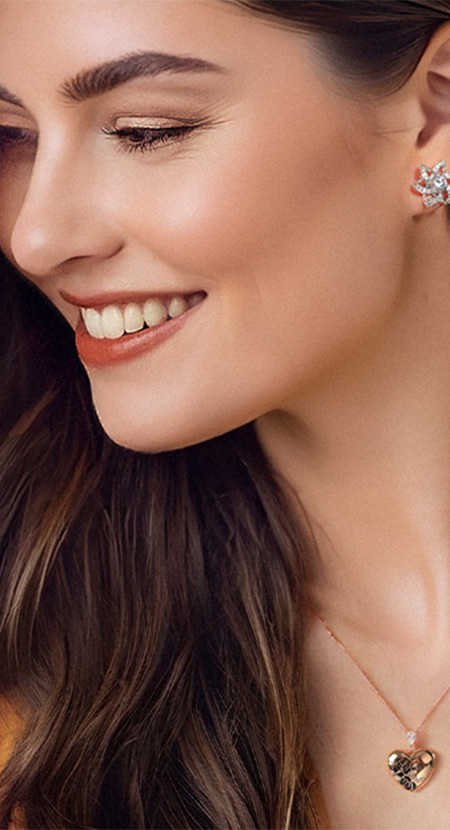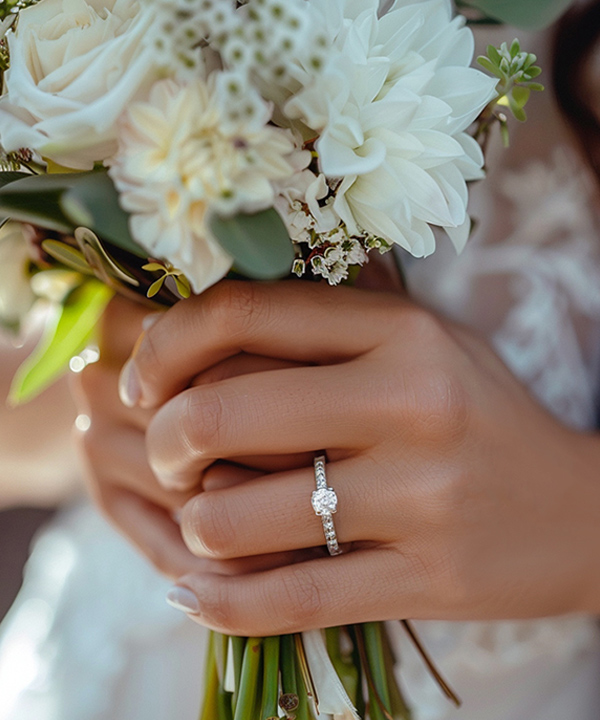Ring Settings 101: A Comprehensive Guide to Choosing the Perfect Setting

Are you dazzled by the variety of settings when selecting a ring? As a timeless piece of jewelry that symbolizes love, commitment, and special care for the occasion, the selection of a ring is crucial. One of the most important aspects when selecting a ring is to look at its setting and the way the diamond or gemstone is secured to the band. There are many different types of ring settings, each with its own unique characteristics and advantages. In this article, we will introduce you to some of the most common ring settings to make it easier for you to pick the ring of your choice.
1. Prong Setting
The prong setting is a popular type of ring setting that uses small metal prongs to hold a diamond or gemstone in place. The prongs are typically made of platinum, white gold, or yellow gold, and they can be rounded or pointed. Prong settings can have four or six prongs, and they are often used for solitaire diamond engagement rings. The prongs are carefully positioned and adjusted to hold the diamond securely while allowing it to catch the light from all angles, which enhances its brilliance and sparkle. The prong setting is a classic and timeless choice for a ring, and it is suitable for a wide range of diamond shapes and sizes.
2. Bezel Setting
In a bezel setting, the diamond or gemstone is surrounded by a metal rim that secures it in place. The rim can be made of platinum, white gold, yellow gold, or rose gold, and it can be straight or angled. The bezel setting is often used for active individuals or those who work with their hands because it provides more protection to the stone than other settings. The metal rim holds the diamond or gemstone securely in place, preventing it from getting snagged or chipped. The bezel setting can be full or partial, meaning that it can surround the entire stone or only a portion of it. The bezel setting is a sleek and modern choice for a ring, and it can be used with any shape of diamond or gemstone. It is also a popular choice for men's rings because of its durability and minimalistic style.
3. Channel Setting
The channel setting is commonly used for wedding bands and features small diamonds or gemstones set closely together within a channel. Channel settings can be straight or curved and are created by two metal walls that hold the stones in place, and the stones are flush with the metal band, creating a smooth and continuous surface. The channel setting is often used for wedding bands, but it can also be used for engagement rings or other types of jewelry. The stones in a channel setting can be round, princess, or baguette cut, and they can be all the same size or varying sizes. The channel setting not only provides a secure setting for the stones but also is a versatile setting that can be used to enhance the brilliance of a center stone or to create a band of sparkle on its own.
4. Pave Setting
A pave setting features small diamonds or gemstones set closely together, creating a "paved" look on the surface of the ring. Pave settings can be used on any part of the ring, including the band, the halo, or the shank. The pave setting can be used to enhance the brilliance of a center stone or to create a band of sparkle on its own. The stones are held in place by tiny prongs or beads of metal, and they are often arranged in a pattern or design. The diamonds or gemstones used in a pave setting are typically smaller than those used in other settings, and they are often round or square-shaped. The pave setting can be used with any type of metal, including platinum, white gold, yellow gold, or rose gold.
5. Halo Setting
In a halo setting, the center diamond or gemstone is surrounded by a "halo" of smaller diamonds or gemstones. The halo can make the center stone appear larger and more brilliant. The diamonds or gemstones used in a halo setting can be round, princess, cushion, or any other shape, and they are usually set in a shared prong or pave setting. The halo setting can be used to enhance the brilliance and sparkle of a center stone, or it can be used to create a unique and eye-catching design on its own. The halo setting is a popular choice for engagement rings, but it can also be used for other types of jewelry, such as pendants or earrings. The halo setting is a classic and timeless choice for a ring, and it can be used to create a wide range of styles, from traditional to modern.
6. Tension Setting
The tension setting is a modern setting that uses the pressure of the metal band to hold a diamond or gemstone in place. The metal band is slightly bent, creating a small groove where the diamond or gemstone is held. The tension setting creates the illusion that the diamond or gemstone is "floating" in mid-air, as there are no prongs or other visible means of support. The tension setting is a modern and unique choice for a ring, and it can be used with any shape of diamond or gemstone. However, it is also more difficult to resize or repair than other settings, as the tension of the band must be carefully adjusted to fit the stone. The tension setting is a popular choice for those who want a modern and minimalist look for their ring.
7. Cathedral Setting
The cathedral setting features arches of metal that support the diamond or gemstone, creating a dramatic and elegant look. The cathedral setting is named after the soaring arches of a cathedral, which the metal arches are meant to resemble. The arches can be simple or intricate, and they typically rise up from the band to add height and drama to a center stone. The cathedral setting can be used with any shape of diamond or gemstone, and it can be combined with other setting styles, such as pave or halo settings. The arches of the cathedral setting can be plain or embellished with diamonds or other gemstones, creating a unique and personalized look.
8. Cluster Setting
The cluster setting is a type of ring setting that features a group of smaller diamonds or gemstones set closely together to create the appearance of a larger stone. The stones in a cluster setting are typically round, and they can be all the same size or varying sizes. The cluster setting can be used to create a unique and eye-catching design, and it can be a more affordable option than a single large stone. The cluster setting can be combined with other setting styles, such as pave or channel settings, to create engagement rings, wedding bands, or other types of jewelry. The cluster setting is a popular choice for those who want a lot of sparkle and brilliance without breaking the bank.
Ring settings are an important consideration when choosing a ring. Each setting has its unique characteristics and benefits, and the choice of setting can greatly affect the overall style and look of a ring. Whether you prefer a classic and traditional style or a modern and unique design, there is a ring setting on the VANCARO website to suit your style and needs. By learning about the different types of ring settings available, you can make an informed decision when choosing the perfect ring for you or your loved one.

Find Your Perfect Jewelry Quickly
Free One-on-One Jewelry Expert Consultation
Thank you!
Your Information has been successfully submitted. Our expert will contact you soon. FYI, please check your inbox for the coupon we sent via email.
OK








